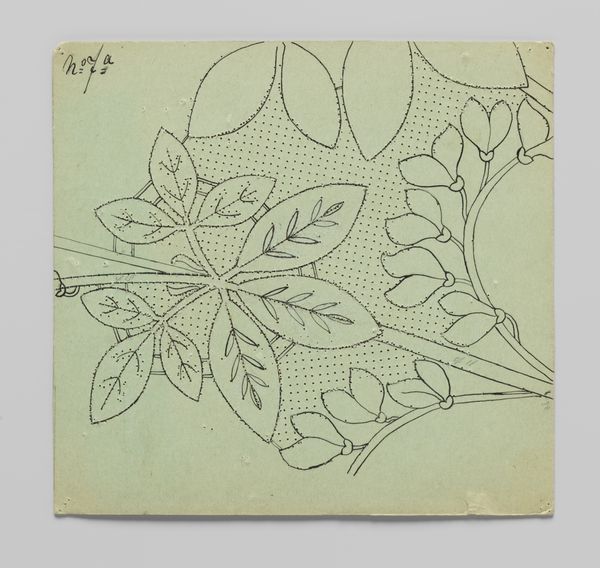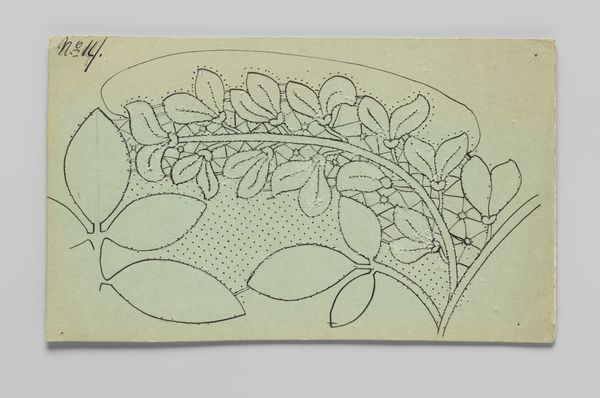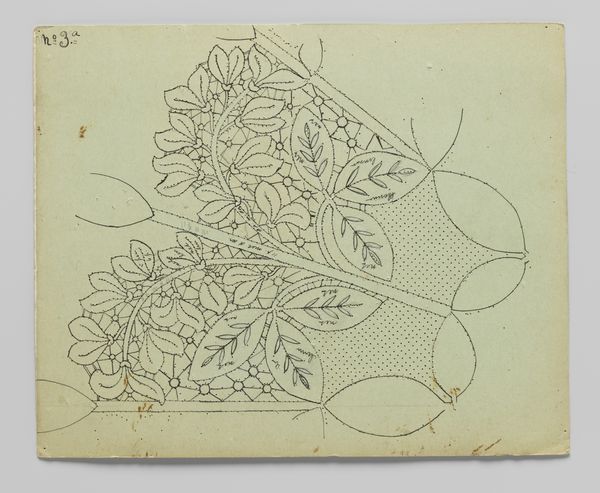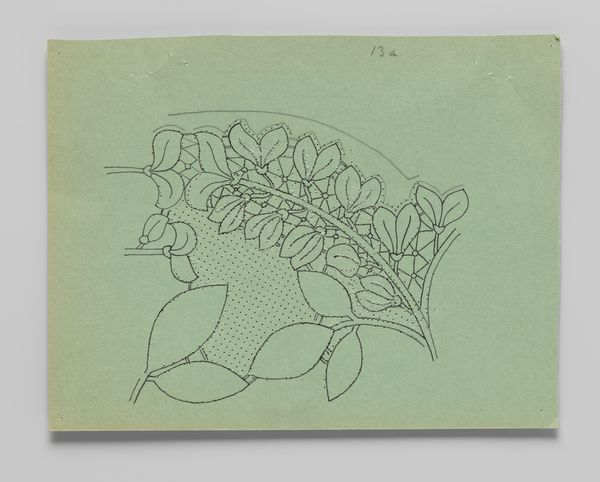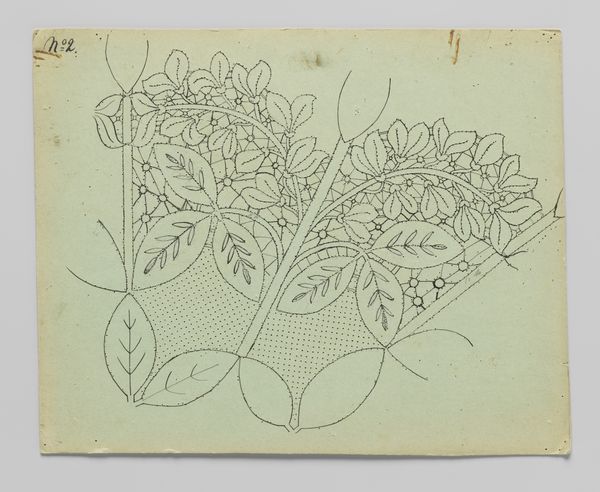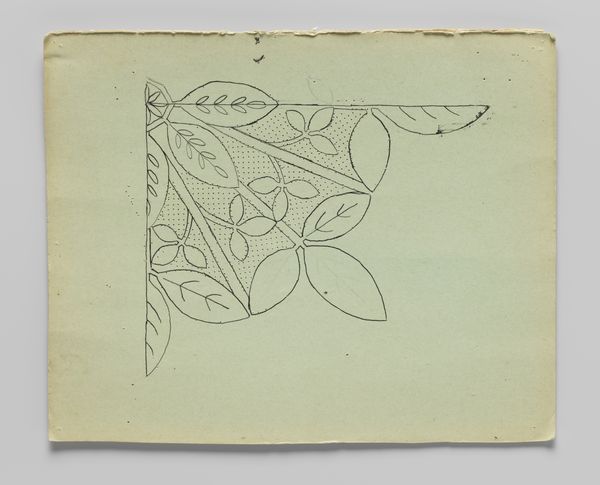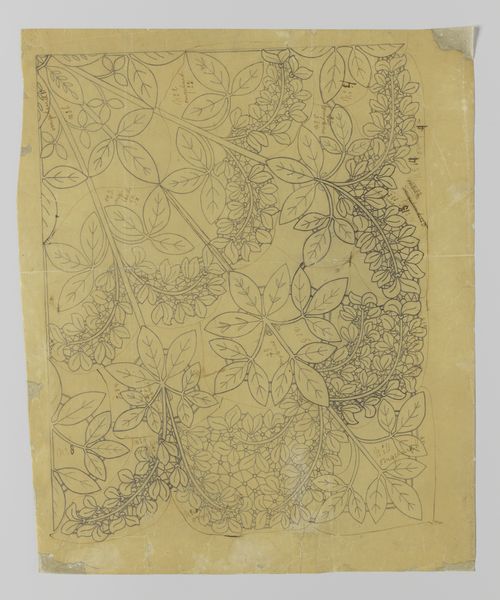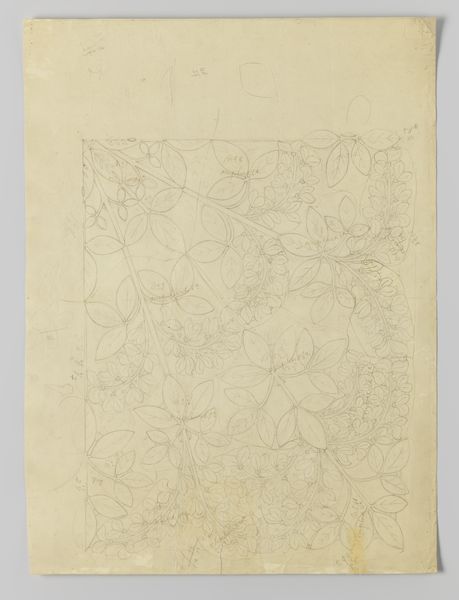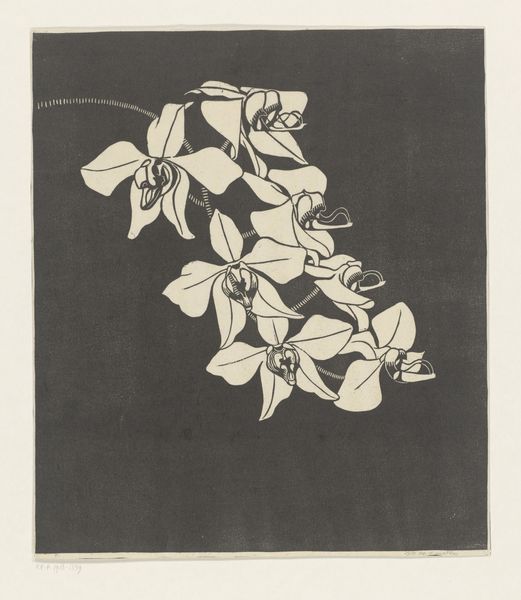
Kantpatroon voor een kleed van kloskant met goudenregentakken en -bloemen c. 1912
0:00
0:00
drawing, paper
#
drawing
#
art-nouveau
#
paper
#
geometric
#
line
#
decorative-art
Dimensions: length 29 cm, width 23 cm
Copyright: Rijks Museum: Open Domain
Editor: This drawing from around 1912 is titled "Lace Pattern for a Dress of Bobbin Lace with Golden Rain Branches and Flowers" by Louise Wilhelmina van der Meulen-Nulle. It’s quite delicate; the floral elements contrast against the geometric shapes behind it. What do you make of this composition? Curator: What strikes me is how the 'golden rain' isn’t just botanical, but symbolic. The Art Nouveau style often looked to nature to express themes of growth, renewal, and even ephemeral beauty. Consider, how might the ephemeral nature of flowers, specifically ‘golden rain’, connect with the geometric patterns meant to capture it in lace? Editor: I see what you mean. The lace acts as a kind of preservation—trying to hold onto that fleeting beauty. The combination is lovely, like nature contained but not stifled. Curator: Exactly! And think about the laborious process of making lace, repeating those geometric forms. It becomes a meditation on nature’s design, and on time itself. There's something inherently human about capturing images. Are there any contemporary interpretations that come to mind? Editor: Hmmm... the geometry reminds me a bit of fractals in contemporary digital art. Curator: Interesting! Both use repeating patterns, though with very different techniques. Perhaps the impulse to find order and structure within complexity remains consistent, whether it’s in hand-crafted lace or algorithms. Editor: I hadn’t considered it that way before. I was focusing so much on the naturalistic imagery, that I almost missed how it reflected deeper symbolic concerns about mortality. Thanks! Curator: My pleasure! Art often challenges us to consider our relationship with time, memory, and the enduring patterns that shape our world.
Comments
No comments
Be the first to comment and join the conversation on the ultimate creative platform.

